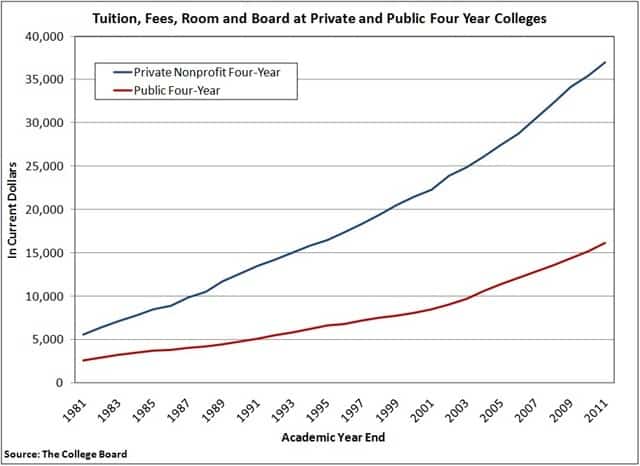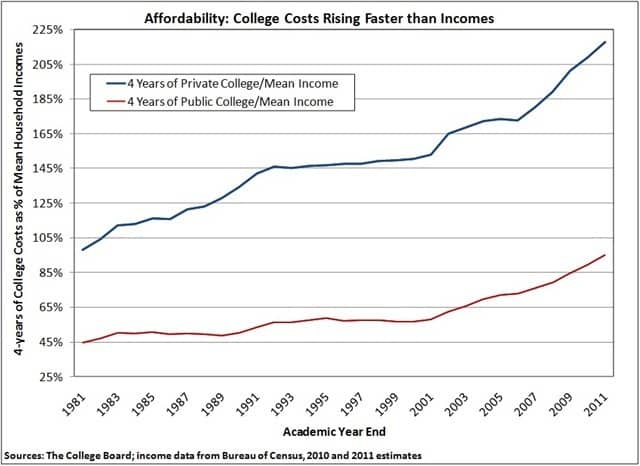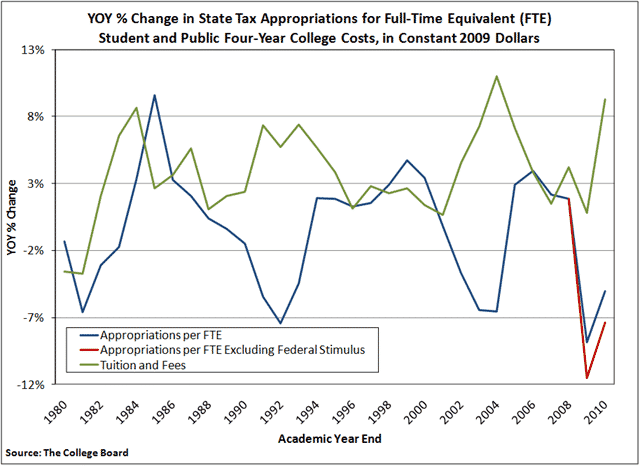Affordable Schooling
Much ink, real and virtual, has been spilled over the last few days on the macro and micro of the election, QE2, global central banking activities, competitive currency strategies and asset-price targeting. We’re going to give that a rest for today (although we reserve the right to spill some more of that ink ourselves in the coming weeks and months) to focus on another corner of the economy, the high and rising cost of secondary education. If it’s true, as economist Herbert Stein said, that if something cannot go on forever it will stop, how does one explain the graphs that follow? As reported by The College Board in its annual college pricing trends survey, the average cost of going to college keeps going up at a pace that typically exceeds not only inflation but also the rise in average household income.
As financial market participants and observers of economic developments, we often talk about housing affordability. As one measure of that, we have looked at the price of the average home as a multiple of average household income. In the following two graphs, we do the same with college costs, both public and private. Thinking like the average head of household as he or she contemplates putting their 18-year old progeny through four years of college, we take the average cost of college at freshman year and multiply by four, and then divide by the average household income. For a parent whose kid was starting college during the 1980-1981 academic year, he or she was looking at almost 100% and 45% of current annual income to fund four years of private college and public college, respectively. Those kids, who graduated from college in 1984, now are parents themselves, and as their 18-year olds start their freshman year this fall they are facing the need to fund 218% and 95% of current annual income for four years of private college and public college respectively (holding income constant for last two years).
We expect the numbers to get even worse for state schools. The graph below shows that state tax appropriations per full-time equivalent student are falling. The only way for state schools to cover their budgets is to raise tuitions. Positive endowment returns would help, too. Families will likely turn more and more to student loans and other forms of debt to bridge the gap. We would tell those new freshmen to go get jobs to put themselves through school, but today’s employment picture isn’t very encouraging.



Comments are closed.